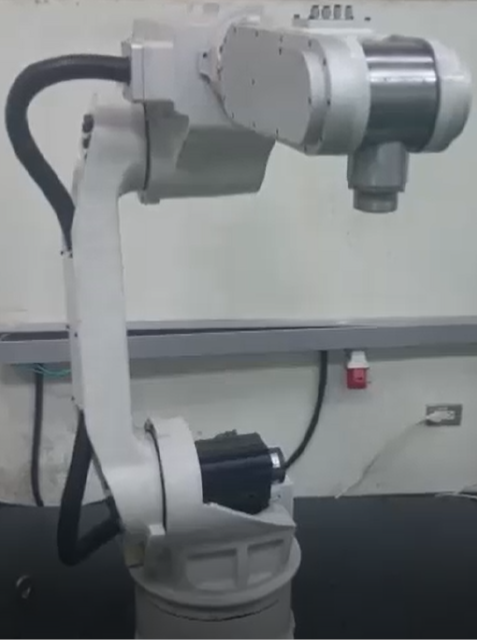{{ post.title }}
글 편집
글 편집 (이전 에디터)
{{ post.author.name }}
Posted on
| Version | {{ post.target_version }} | Product |
{{ product.name }}
|
|---|---|---|---|
| Tutorial/Manual | {{ post.tutorial.upload_filename }} | Attached File | {{ post.file.upload_filename }} |
Robot Design Using Simulation
Product: Multi-Axis Robot
Analysis Goal:
Robot Controller Design and Component Specification Determination
There are many important aspects of industrial robot development, such as the motion controller, the stiffness of the components, vibration during operation, and the inertia ratio of the drive motors. If a robot is designed using trial and error or experience, design problems can only be found after the prototype is complete. This can lead to a long development period and low product quality. Having the ability to evaluate a design through simulation before a prototype is made can dramatically reduce the cost of development. ITRI, a technology research institute founded in 1973, used RecurDyn for virtual prototyping during the development of an articulated robot. Through RecurDyn, ITRI was able to simulate both the robot and its controller. This allowed for efficient design of both the controller and the various elements of the robot, such as motors, bearings, and reducers. Furthermore, RecurDyn’s flexible body modeling was used to perform vibration analysis in various postures rapidly and efficiently, reducing development cost over traditional techniques.
◆ Process

① Create a rigid body robot model that uses joints, bushings, couplers, beam forces, and other elements.
- Bolts were modeled using beam forces, which simulate quickly and allow for the stiffness of the bolt to be modeled accurately.
- Reducers were modeled using couplers that included bushing elements to represent the torsional rigidity.
② Model the robot controller using the built-in controller modeler CoLink and perform a co-simulation between RecurDyn and CoLink.
③ Convert specific bodies to flexible bodies, allowing the model to accurately vibrate.
④ Calculate the natural vibration modes for various postures during a time-domain simulation.
◆ Key Technologies for Analysis
- Inverse kinematics to predict the motion path of the robot
- Parametric modeling to easily tune the PID gains of the controller
- Modally reduced flexible body modeling that can include both normal modes and constraint modes for nodes that bearings are connected to
- The ability to perform eigenvalue analyses on the model at various points during a time-domain simulation
◆ Toolkits

- RecurDyn/Professional
- RecurDyn/FFlex
◆ Customer Challenges
- The need to quickly verify that a robot can perform the desired motion
- The need to quickly determine suitable specifications for bearings, motors, and reducers for a robot design
- Difficulty in predicting robot vibration characteristics that vary with robot posture
- Difficulty in designing a robot’s motion controller without a physical prototype
◆ Solutions

- Prediction and verification of robot’s range of motion using inverse kinematics
- Obtaining data such as torque and stiffness from the RecurDyn model
- Accurate prediction of the natural vibration modes of a robot using flexible bodies in the simulation model. Controller design using the RecurDyn model as a plant instead of a physical prototype
◆ Outcomes

- The controller was designed quickly using a rigid body simulation model without any physical prototype.
- The data such as appropriate motor capacity and bearing stiffness necessary for the robot design was obtained through simulation
- Time and cost were reduced through quantitative evaluation of various possible designs.
- Visual simulation results such as natural vibration mode animation provide good design guidance.
◆ Other Applications
-
A manufacturing robot arm simulation using RecurDyn

- You can see the vibration of the arm due to the flexibility of a part of the robot arm.
-
Applications in Robotics Industry

- Applications
- Various case studies




